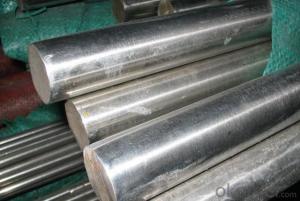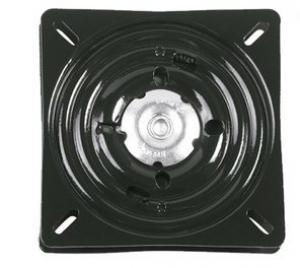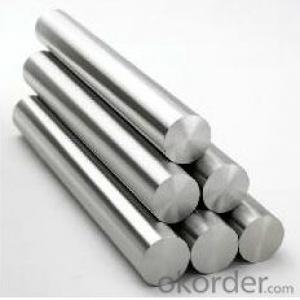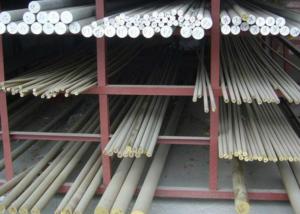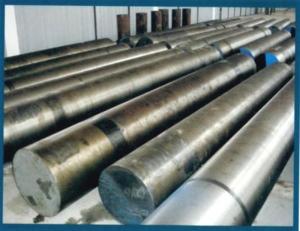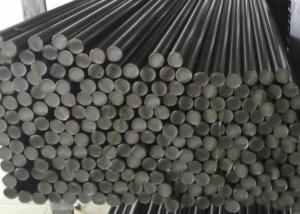Mould Steel Bar H13 Hot Forged Finished
- Loading Port:
- Tianjin
- Payment Terms:
- TT OR LC
- Min Order Qty:
- 25 m.t.
- Supply Capability:
- 50000 m.t./month
OKorder Service Pledge
OKorder Financial Service
You Might Also Like
Item specifice
Mould Steel Bar H13 Hot Forged Finished
Product Description:
1.The steel is widely used to manufacture hot extrusion dies and mandrels, forging die forging hammer die forging presses, forging machines, mold inserts and alloy die-casting mold.
2.the steel has high hardenability and thermal cracking capacity,good wear resistance,with good heat resistance, in higher temperatures has good strength and hardness, high wear resistance
3.HOT WORK TOOL STEEL ROUND BAR
H13/DIN1.2344 hot work mould steel feature:
Comparable steel:H13(USA,ASTM);DHA1(Datong,Japan);4Cr5MoSiV1(China);1.2344(Germany DIN);SKD61(Japan,JIS)
Chemical Composition:
C | Si | Mn | Mo | V | Cr | P | S | |
0.32~0.42 | 0.80-1.20 | 0.20-0.50 | 1.10-1.75 | 0.80-1.20 | 4.75-5.50 | ≤0.030 | ≤0.030 |
Features of H13 Steel:
1, Hot work tool steel
2, Very good red-hardness with toughnes
3, Tools may be water-cooled in service
4, May be cold-hobbed in the annealed condition
Application:
1, Casting dies for aluminium, magnesium and zinc
2, Extrusion dies and adaptor ring
3, Hot stamping and press forge dies
4, Shear blades for hot work and hot swaging dies
Product Show:
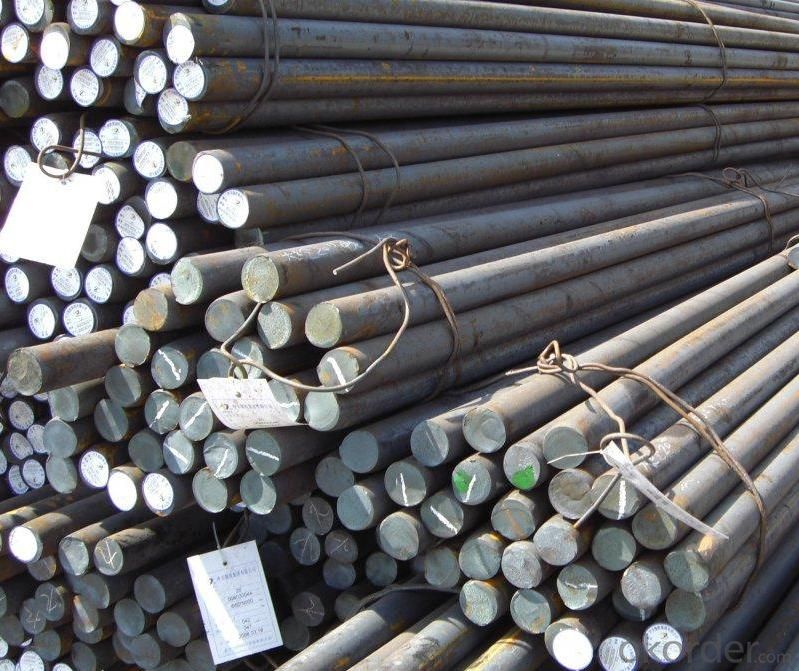

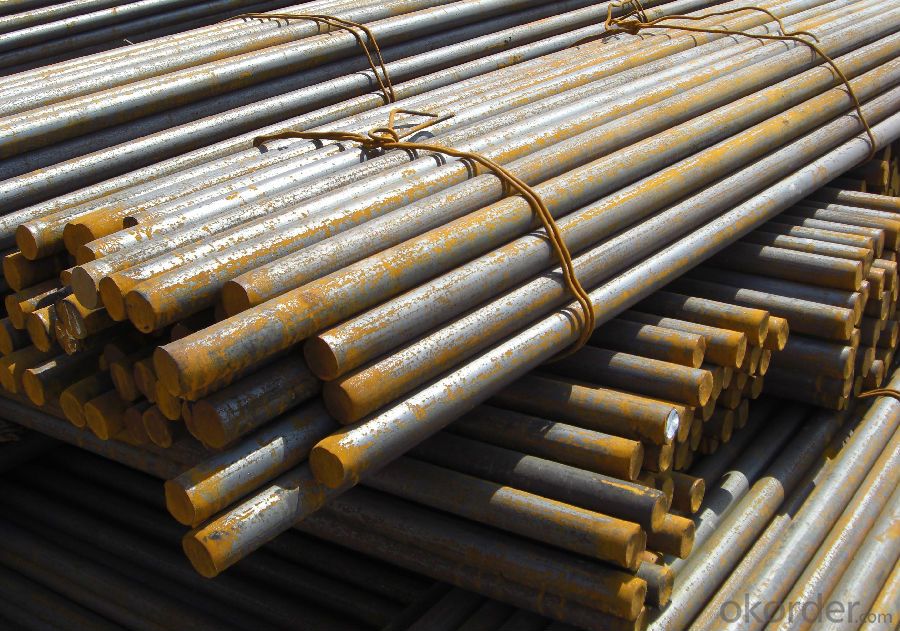
- Q:Can special steel be used for electrical applications?
- Yes, special steel can be used for electrical applications. Special steel alloys, such as stainless steel or electrical-grade steels, are often used in electrical applications due to their excellent electrical conductivity, resistance to corrosion, and high strength properties. These steels are commonly utilized in the manufacturing of electrical components, wiring, transformers, and various electrical equipment.
- Q:How is tool steel different from other types of special steel?
- Tool steel is different from other types of special steel primarily because it is specifically designed to withstand high levels of stress and heat while maintaining its hardness and durability. It is specifically formulated to have high resistance to wear, abrasion, and deformation, making it ideal for cutting, drilling, and shaping tools. Unlike other special steels, tool steel has a balanced combination of properties like hardness, toughness, and heat resistance, which makes it suitable for use in various industrial applications where high-performance tools are required.
- Q:What are the common challenges in welding special steel?
- When welding special steel, there are several challenges that differ from welding regular carbon steel. Some common challenges in welding special steel include the following: 1. High carbon content: Special steels often have a high carbon content, which can increase hardness and brittleness. Achieving a proper weld without cracks or defects can be more difficult. 2. High alloy content: Special steels often contain various alloying elements like chromium, nickel, or molybdenum, which can affect weldability. These elements can introduce complexities, such as increased susceptibility to heat-affected zone (HAZ) cracking or the formation of brittle phases. 3. Heat sensitivity: Special steels are often more sensitive to heat during welding. Excessive heat can cause grain growth, reduced mechanical properties, or distortion of the welded structure. Therefore, careful control of heat input and preheating techniques may be necessary. 4. Pre-weld and post-weld treatments: Specific pre-weld and post-weld treatments may be required for special steels to ensure proper weld quality and performance. These treatments can include preheating, stress relieving, or post-weld heat treatment. Failure to follow these procedures can result in residual stresses or reduced mechanical properties. 5. Joint design and fit-up: The design and fit-up of the weld joint can also present challenges. Special steels may require specific joint configurations, such as a double-V or double-U groove, to ensure adequate penetration and fusion. Additionally, tight tolerances may be necessary to maintain desired mechanical properties. 6. Welding process selection: The choice of welding process can greatly impact the success of welding special steel. TIG or laser welding may be more suitable for high-alloy steels, while MIG or submerged arc welding may be better for specific applications. Selecting the appropriate welding process is crucial for achieving a sound weld with desired properties. To overcome these challenges, it is essential to thoroughly understand the specific type of special steel being welded and follow proper welding procedures and techniques. This may involve conducting pre-weld qualification tests, using suitable welding consumables, and ensuring proper heat control throughout the welding process. Additionally, working with experienced welders and seeking guidance from experts in special steel welding can effectively overcome these challenges.
- Q:How is special steel used in the packaging industry?
- Special steel is used in the packaging industry for a variety of applications such as manufacturing durable and corrosion-resistant containers, packaging machinery, and tools used in the packaging process. It provides strength, reliability, and longevity, ensuring the safety and protection of products during storage and transportation.
- Q:Can special steel be used for jewelry?
- Yes, special steel can be used for jewelry. Special steel, such as stainless steel or titanium, is often used for making contemporary and modern jewelry pieces due to its durability, resistance to tarnish and corrosion, and affordability. It offers a unique and sleek aesthetic and can be crafted into various designs, making it a popular choice for jewelry makers and wearers alike.
- Q:What is the fatigue strength of special steel?
- The fatigue strength of special steel refers to its ability to withstand repeated loading and unloading without failure. It is typically higher than that of regular steel due to its enhanced composition and manufacturing process, which makes it more resistant to fatigue and allows it to endure higher stress levels.
- Q:What are the requirements for special steel used in military applications?
- The requirements for special steel used in military applications typically include high strength, toughness, and durability to withstand extreme conditions and heavy impact. It should have excellent resistance to corrosion, wear, and fatigue to ensure long-term performance. The steel must also possess good weldability and machinability for ease of fabrication and maintenance. Additionally, it should meet stringent specifications and standards set by military organizations to ensure reliability, safety, and compatibility with other materials and systems.
- Q:What are the different surface finishing techniques used for special steel?
- There are several surface finishing techniques used for special steel, including electroplating, passivation, pickling, and powder coating. Electroplating involves depositing a thin layer of metal onto the steel surface to enhance its appearance and provide corrosion resistance. Passivation is a chemical process that removes surface contaminants and forms a protective oxide layer on the steel, preventing corrosion. Pickling involves using acid solutions to remove surface impurities and oxide layers, resulting in a clean and smooth surface. Powder coating is a technique where a dry powder is applied electrostatically to the steel surface and then cured under heat, creating a durable and decorative coating.
- Q:How does cryogenic treatment affect the toughness of special steel?
- The toughness of special steel is greatly affected by cryogenic treatment, which involves subjecting the steel to extremely low temperatures for an extended period. This process has the ability to transform the microstructure of the steel, resulting in improved mechanical properties, including increased toughness. Throughout cryogenic treatment, the steel goes through a process known as martensitic transformation, in which the carbon atoms within the steel lattice rearrange themselves. This transformation leads to the development of additional carbides, which strengthen the steel and enhance its toughness. These carbides act as barriers, hindering crack propagation and improving the steel's resistance to fracture. Additionally, cryogenic treatment reduces the presence of retained austenite, which is a metastable phase in steel that can have detrimental effects on its mechanical properties. The transformation of retained austenite into martensite during cryogenic treatment further enhances the toughness of the steel. The increased toughness achieved through cryogenic treatment makes special steel suitable for various applications that require high strength and resistance to fracture. It improves the steel's ability to endure heavy loads, impacts, and harsh environments. Moreover, cryogenic treatment can enhance the wear resistance and dimensional stability of special steel. It is important to acknowledge that cryogenic treatment alone is not a complete solution for optimizing the toughness of special steel. Other factors, such as the initial composition and heat treatment of the steel, also play a vital role in determining its overall mechanical properties. Therefore, cryogenic treatment should be considered as a complementary process in order to optimize the toughness of special steel.
- Q:How is special steel used in the mining industry?
- Special steel is used in the mining industry for various applications such as drilling tools, conveyor systems, crushing equipment, and structural components. Its high strength, toughness, and resistance to wear and corrosion make it ideal for withstanding the harsh conditions and heavy loads commonly encountered in mining operations. Additionally, special steel is used for creating cutting edges and teeth on mining machinery, enhancing their efficiency and durability.
1. Manufacturer Overview |
|
|---|---|
| Location | |
| Year Established | |
| Annual Output Value | |
| Main Markets | |
| Company Certifications | |
2. Manufacturer Certificates |
|
|---|---|
| a) Certification Name | |
| Range | |
| Reference | |
| Validity Period | |
3. Manufacturer Capability |
|
|---|---|
| a)Trade Capacity | |
| Nearest Port | |
| Export Percentage | |
| No.of Employees in Trade Department | |
| Language Spoken: | |
| b)Factory Information | |
| Factory Size: | |
| No. of Production Lines | |
| Contract Manufacturing | |
| Product Price Range | |
Send your message to us
Mould Steel Bar H13 Hot Forged Finished
- Loading Port:
- Tianjin
- Payment Terms:
- TT OR LC
- Min Order Qty:
- 25 m.t.
- Supply Capability:
- 50000 m.t./month
OKorder Service Pledge
OKorder Financial Service
Similar products
New products
Hot products
Related keywords
